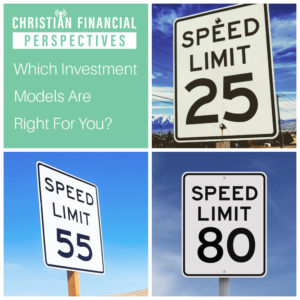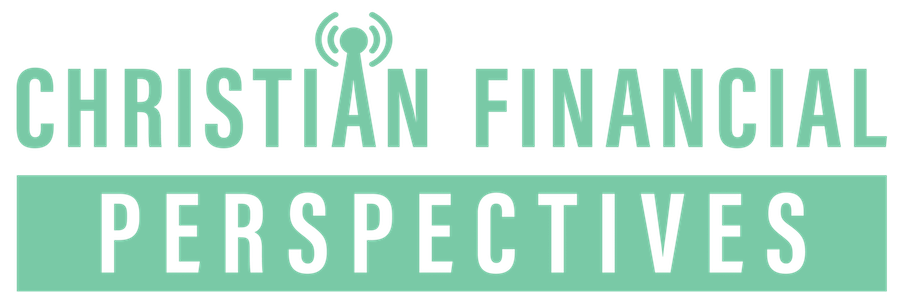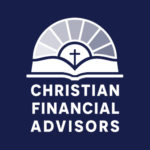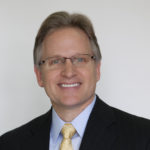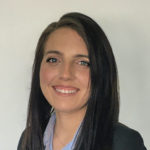Click below to listen to Episode 88 – Which Investment Models Are Right For You?
Subscribe: Apple Podcasts | Google Podcasts | Spotify | Amazon Music | Stitcher | RSS | More
Which Investment Models Are Right For You?
We encourage you to listen to episode 87 on “Understanding Investment Risk” before delving into this episode on “Which Investment Models Are Right For You”. Bob discusses how these risks play into picking an investment model(s) to build a complete portfolio that corresponds to your goals, needs, and risk number.
A risk number has a scale of 1 – 100, with 1 being the lowest risk level and 100 representing the highest risk level. Think of these numbers like driving a car. The lower the speed (i.e. risk number), the safer you are, but it will take longer to get to your destination. However, the faster you go, the more risk it carries, but you will get to your destination faster. In other words, are you more comfortable driving slower to be safer, or faster to get to your destination sooner, but it involves more risk?
So, which investment model is right for you?
HOSTED BY: Bob Barber, CWS®, CKA®
CO-HOST: Bailey Theaker
Mentioned In This Episode
Want to ask a question about your specific situation? Schedule a complimentary 15 minute phone call.
EPISODE TRANSCRIPT
[INTRODUCTION]
Welcome to “Christian Financial Perspectives”, where you’re invited to gain insight, wisdom and knowledge about how Christians integrate their faith, life and finances with a Biblical Worldview. Here’s your host Christian Investment Advisor, Financial Planner, and Coach, Bob Barber.
Bob:
In today’s podcast, we’re going to talk about what’s the right investment model for you. This is going to be basically a second part of the first part on what we did on investment risk and all the risks that you need to look for when putting together an investment portfolio that we shared with you a couple of weeks ago on the podcast. I would encourage you to go back and listen to that. Bailey’s going to share a few of these risks for those of you that didn’t get to hear that podcast. I thought a really good scripture for today for this would come from Ecclesiastes 11:2. I quote this scripture a lot, because I really like it, but it really goes with today’s podcast, “What’s the right investment model for you.” It says, “But divide your investments among many places, for you do not know what risk might lie ahead,” and that’s from the New Living Translation. I like the way it says that.
Bailey:
Me too. That’s good. Well, as you mentioned in our last podcast, we discussed understanding all of our investment risks and talked about 15 of the major risks that play into building a model portfolio. And some of those risks were concentration risk, economic risk, political risk, tax risk, and liquidity risk.
Bob:
What about the other 10? Well, you’ll have to go back and listen. You wanted me to say all those. You said, “Bob that’s too much to go through.”
Bailey:
Well, there are a lot of them. Like you said, I would encourage our listeners to go back and listen to that podcast from before where we go into detail about all 15 of them. And today, we’re going to discuss how these risks play into picking an investment model or a group of investment models to build a complete portfolio that corresponds to your individual goals and needs and risk number.
Bob:
One of the things we do here at Christian Financial Advisors is we help our clients first to understand what their risk number is and how that plays into choosing an investment model or even possibly picking a few models that have different risk numbers. And we’re going to go all into this in detail. A risk number, and we try to get everyone here to arrive at what is their risk number. And this is based on a scale from 1 to 100. 1 being the lowest risk. That’s where you’re basically putting your money in your mattress or under your pillow, to the highest risk level. That’s 100. It’s really important that all of us find out what is our risk number, and that 100, that is the riskiest. That’s like putting all your money in one IPO stock that’s just coming out and you really don’t know much about the company, and that’s an extreme amount of risk.
Bob:
There’s that level from 1 to a 100. And you can think of these numbers also like speed, like how fast you’re going. You’re either walking at one or two miles an hour, or you’re driving at 75 or 80 miles hour. We have a little chart. And when you look at the risk number, it looks like a speed limit sign. When we put that risk number up. And of course the lower, the speed, the safer you should be. And the faster you go, you would think more risk in involved with that.
Bailey:
Well, in other words, if you’re more comfortable driving slow, it might take you a little longer to get there, but it certainly feels safer to drive slower, and the faster you’re going, you’ll more quickly get to your destination, but it does involve a little more risk.
Bob:
So, as an example, we’re driving to Amarillo tomorrow. We’re going to go hike Palo Duro Canyon, which most people don’t know about. It’s the second largest Canyon in the United States next to the Grand Canyon. We have that right here in Texas. But I can not imagine driving from New Braunfels, and those of you that listen to our podcast up in the Northeast or on the West Coast, New Braunfels is in between Austin and San Antonio. Amarillo is about 600 miles, 500-600 miles. I can’t imagine driving 20 miles an hour. I’m going to drive the speed limit 70, 75 miles an hour, and I’m going to take that risk of going faster so I can get there in a day and not three days, but all of us have a certain amount of risk that we feel comfortable with and finding that right risk number is important and it’s different for all of us, but most people fall somewhere in the middle for their risk number. And then once you get that risk number, it’s about choosing the right investment model or models that’s right for you. But it it doesn’t always correspond to your risk number because we’ve had some clients here where they’ll take the Riskalyze test that we have, and their portfolio may be at a 50 risk and they’ll come in at a 20, but then once we understand what their goals and objectives are, we can raise that risk because they understand what’s involved with that. Does that make sense?
Bailey:
Yeah, absolutely. Which investment model is right for you? That’s today’s question. That’s today’s subject. And before we get anywhere close to the possible answer, it depends on so many different things that play into that risk number. And so, Bob, what are some examples of the things that play into that?
Bob:
Well, your age, because when you’re younger, you have a lot more years to save and earn. You have more years to come out of downturns in the market. Your health situation. You could be younger, but not have a bad health situation. That’s going to pull your risk number down. How much do you have to invest? How much debt load are you presently carrying, like the mortgages or car loans, personal debt. What are your long-term goals and objectives and what are your short-term goals? Are you wanting growth or income or a combination of the two? And we can do that with these models we’re going to go over. We can use one or two or even three models.
Bailey:
Well I know that at CIS you offer five different, very actively managed, biblically responsible models that you manage for your clients. And they pick from the ones that fit them the best for what they’re trying to accomplish in their life.
Bob:
Yeah. We have five biblically responsible, Christian Financial Advisors, actively managed portfolios. That’s a lot of words in there, but I monitor that daily, these five models, and we’re going to go into these, but the five models consist of an ultra conservative model, and we were talking about that risk number and that’s going to be in a much lower risk number. Matter of fact, our conservative model falls in a risk number around 20, in the low 20’s. And then the next step up, that’s a higher risk, is a conservative model. And that’s a risk number that’s going to fall in the mid to high 20’s. Then you move up to a moderate model, and that’s with a risk number that’s going to be in the low to mid 50’s. think of the speed limits, okay. Started off at 20 kind of ended up going around 25, 30. Now, you’re at 50. Then you have a growth model that we manage actively, and that has a risk number in the mid to high 60’s, and then an aggressive growth model with a risk number in the high 70’s to low 80’s. That’s getting the speed limit pretty high up there with that type of model. I’m going to go into each one of these models in detail so that those that are listening have an idea of these models and how to pick which model is right for you.
Bailey:
Sure. Well, I think that sounds great. Let’s go into some of the details for those five models. Starting with that ultra conservative model that CIS offers with the risk number in the low 20’s, what does that look like, Bob?
Bob:
Ultra conservative model is a model that we have here for those that don’t want to put anything in stocks at all, or maybe you just need some cash reserves. It’s one step away from having a CD at the bank. It carries more risk than what you would have in a CD or a money market at the bank, actually about twice that risk, but it’s still low on the risk scale from 1 to a 100. It comes in, like I say, at about a 20, but it has no stocks in it at all. It consists of fixed income instruments and a lot of treasury bills and very short, short term bonds. It’s highly liquid, very easy to get to, but our risk number, each one of these risk numbers, when you look at a risk number of like 20 and you look forward six months and we use this technology, we can look at that and we can say, okay, we kind of know where this portfolio is going to go in the next six months at any point in time. It could be actually down 1.5% To 2%, but the probability of it being up more 3% or 4% is not high. It’s going to kind of sit in the middle of those two numbers. Average returns, now I got to say, there’s no guarantee of the future. Past performance is not a guarantee of future performance, but average returns here, they’ll be in the 2% to 3% range. They’re low, but this is also your lowest risk portfolio. Like I say, that comes in at about a 20.
Bailey:
Okay. And next would be the Christian Financial Advisors biblically responsible, actively managed, conservative model with a risk number in the high 20’s.
Bob:
I like how you say that. Kind of a tongue twister. Try to say that one fast, right? The conservative model is one notch up, and the risk level really is only going from about a 20 in the ultra conservative, up to about a 26 or 27, but here’s where we start adding stocks to it. Each model that I’m going to be talking about from here going forward, we’re adding more and more stocks to it, a diversified portfolio, across many different sectors. I’m managing this actively on a daily basis. Our conservative portfolio is going to have an exposure of about 20% to stocks, but we pick different kinds of stocks in a conservative model than we would for an aggressive growth model. In a conservative model, we’re going to pick more of your blue chip, well known companies. I can’t mention them because that would be an offer to buy or I’d be saying, go buy that stock. I can’t mention the companies, but just think of your household names and who you do business with. Those are the blue chip companies. You’ll recognize the names of them. In an aggressive growth, the stocks are going to be more your small sized and mid-sized companies that are really growing. The probability of this, looking out six months of being down or up, is down according to our risk models and our technology about 3 or 3.5%, up about 7.5%. It’s going to kind of fall somewhere in the middle there. You can expect from past performances. This has been in the 3% to 5% range of returns. Again, that’s not a guarantee of the future performance.
Bailey:
Okay. And next would be actively managed, moderate model with a risk number in the low to mid 50’s.
Bob:
This falls right in the middle. You think about a scale from 1 to a 100. If you’re at 50, you’re right in the middle. And when you’re driving 50, 55 miles an hour down the road, you feel pretty safe. You’ve got your risk, but it’s not like driving 80 or 85. When I go to Austin and go around on the toll road, that speed limit can get up to 80 and 85. I don’t even feel comfortable going that fast, but the moderate is where a lot of people fit, and that’s a risk, like I say, of about 50, 51. It can get up as high as 56 or 57, but it kind of hangs out right in the middle, and the probability of our technology and what it shows us of a portfolio like this is it’s going to move up and down by as much as down 10% or up as much as 15%.
Bob:
You notice the higher up we’re getting in the risk, the more volatility. It’s going to move around a lot more. And that’s why in a moderate portfolio, that’s not necessarily where you want to put money that you’re going to need in the next year or two. You want to put money that you’re going to need in the next year or two over in the ultra conservative that’s not going to go up and down near as much. I mean, the ultra conservative or the conservative models. The moderate is built – I like to put this around a 5 to even 7 year time horizon when you put money there. Now, all of our models, because we manage them as a fiduciary advisor, they’re all liquid. You’re not stuck in this model, and you can move from one model to another model very easily here at Christian Financial Advisors. Like with the elections that were coming up recently, we’re past that now, but a lot of people were concerned. They moved from a moderate to a conservative model and just asked us to move that down. Or they move from a growth to a moderate or down to a conservative.
Bailey:
And would you say, Bob, that this moderate portfolio is that where most people fall? It’s kind of in that middle range.
Bob:
They do. That’s where the majority of people that I’ve worked with for the last 30 years, they fall right in the middle, but they can also build a portfolio that’s built from aggressive growth and conservative. And that’s kind of like having a moderate portfolio. Building a model with a risk level of 75 and building one with a risk model of 20, you average the two out, and you’re at 45 or 50. Does that make sense? We’re going to talk about how to use these models for your goals and objectives here in a minute, but we just have two more models.
Bailey:
Yeah. And the next one would be our actively managed, growth model with a risk number in the mid to high 60’s.
Bob:
This is where your exposure to stocks is as high as 80%. Now you remember in the moderate model, exposure to stocks is going to be about 40% to 50%, at a high 60%. Now, we’re getting up there. We’re getting a lot of exposure in the stock market. Remember, the way I manage here, I’m moving across many different sectors. I’m also looking at all the different sectors and making sure that we’re not in sectors that are way, what I call, overheated that are overvalued. I’m looking for sectors that are good value. If a sector has been really strong for a long time, many times, it’s time for that sector – to let some air out of the balloon before it breaks. But a growth portfolio has a risk of around 66 to 70. You’re getting your risk higher. Think about it in speed limits again. Now you’re driving 70, and the kind of stocks that we’re picking are more growth based stocks. A growth model has a time horizon of seven, eight, nine years. When you put your money in a growth model, even though the way we’re managing it is liquid, it’s going to have a lot of volatility in it. As much as our probability from our technology down as much as 14%, maybe even more, like when we were going through COVID last year, up as much as 20%. Is it going to fall somewhere in the middle? And it does. Your past returns have shown that, but you gotta be able to stomach the volatility and realize this is a long-term investment. And then we get to our last of our models that we use here at Christian Financial Advisors.
Bailey:
Last, but certainly not least, we have our managed, aggressive growth model with a risk number in the high 70’s to the low 80’s.
Bob:
Yeah. Kind of reminds you of that toll road, right. I’ll be driving on that thing. And the speed limit says 80, and I’m doing 80. Then people pass me doing 90. That’s some risk takers. This is the highest risk portfolio. In a very strong market, we’ll have 100% of this portfolio in stocks. And they’re going to be in your small cap and mid cap type stocks. It’s going to be in those sectors that we really feel are taken off. You’d better be able to stomach it. As an example, back in COVID, even looking forward, this is the kind of portfolio that can be down 20%, 25%, even 30%, right? I see your eyes going, “Whoa,” but it can be up that much too. It’s going to fall somewhere in the middle of that range, but going forward, it can keep you up at night. It can be very scary. That’s why when we build a portfolio, we’ve got to know your goals, and this is a portfolio that’s built for 10 years plus. You’re taking your eyes off of it, and you’re letting the portfolio do what the portfolio is going to do. Volatility is a natural part of an aggressive growth portfolio.
Bailey:
Wow. Well, those are our five major portfolios here that you manage at Christian Financial Advisors. Bob, is it possible that people can kind of figure this out on their own and invest however they think fits into these risk numbers? What would you say about that?
Bob:
Yeah, if they like doing brain surgery on themselves, they can. I mean, I got a torn meniscus on my knee. I can go do a lot of research on the internet, and I could try doing an operation on my knee, I guess. It might not be too wise to do, but you can do that. I would highly suggest you don’t. There’s not been a lot of success, that I’ve seen, in my 30 years. I mean, it’s taken me this many years to understand all this, and I’m still learning. I mean, I learn every single day. So yes, you can do it yourself, but be very, very careful of that. You’ve got to monitor it to really stay on track. I like the scripture from Ecclesiastes 4:9-10 that says, “Two people are better off than one, for they can help each other succeed.” And this is from the New Living Translation again. If one person falls, the other can reach out and help. And that’s really what we are about here is helping our brothers and sisters in Christ manage this minefield of all this risk and investing and the right models to pick from and how it’s all going to correspond to a detailed financial plan, and that’s going to change. You just don’t set something in place and forget about it. Everything’s in motion and changing. These models, we have many people that are using all three or four or five of these models, but we put a different amount in each one and it all has to do with what fits them individually. There is no right answer for everybody. Everybody’s different.
Bailey:
For our listeners, if you’re interested in learning more about that, or you want to connect with us here at Christian Financial Advisors, you can give us a call at (830) 609-6986 during our business hours or you can visit us on the web at ciswealth.com.
[CONCLUSION]
That’s all for now.
We invite you to listen to all of our past episodes covering many financial topics from a Christian Perspective. To make sure you don’t miss any of Bob’s upcoming episodes you can subscribe to Christian Financial Perspectives on iTunes, Google Play Music, Spotify, or Stitcher. To learn more about integrating your faith with your finances, visit ciswealth.com or call 830-609-6986.
[DISCLOSURES]
Investment advisory services offered through Christian Investment Advisors Inc. DBA Christian Financial Advisors, a registered investment advisor. Comments from today’s show are for informational purposes only and not to be considered investment advice or recommendations to buy or sell any company that may have been mentioned or discussed. The opinions expressed are solely those of the host, Bob Barber. Bob does not provide tax advice and encourages you to seek guidance from a tax professional.

